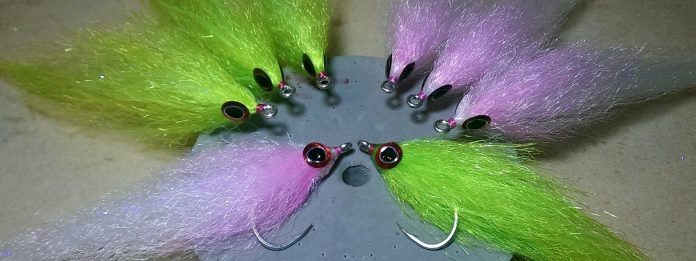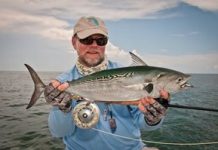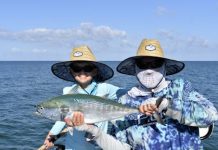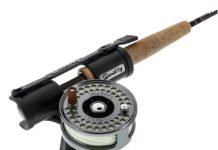 It’s a growing passion with many a Florida angler — fly fishing in saltwater. Most are northern transplants who migrated to the Sunshine State bringing boxes filled with freshwater patterns. And the question on the minds of these fly flinging enthusiasts is “can I use my old favorites in this new saltwater environment?” For the answer, we turn to our own “Fly Guy.”
It’s a growing passion with many a Florida angler — fly fishing in saltwater. Most are northern transplants who migrated to the Sunshine State bringing boxes filled with freshwater patterns. And the question on the minds of these fly flinging enthusiasts is “can I use my old favorites in this new saltwater environment?” For the answer, we turn to our own “Fly Guy.”
While giving a saltwater fly fishing seminar at a fly shop in northeastern Pennsylvania this summer, I was asked this question. It is one of the most frequently asked questions I hear. Dave Keck, the store’s owner, who I fished with for Smallmouth Bass on the Susquehanna River, five minutes from where we were in Berwick, Penna., was close to me and I asked him to get out his fly box. Some flies did not have stainless steel hooks, but the flies we selected were all effective patterns to use in the Tampa Bay area where I do most of my fishing. This applies to most areas of Florida as well. Minnow imitations were most prevalent with hook size appropriate for Snook, Redfish and Speckled Trout, which are the most predominant quarry most of the year. Colors were also consistent with patterns that either “match the hatch” of local baitfish, or even imitate shrimp or small crabs.If you believe, as I do, that presentation is more important than color and size, his fly box would give you a good start if you ventured south for a few days of R&R with your fly rod.
Using a combination of natural and synthetic materials, as well as size and weight variations, little else was needed. His predominant patterns were Clouser varieties, which Lefty Kreh has used to catch over 30 different saltwater species.
Not everyone uses stainless steel hooks, but a strong hook with the proper length and gap is very important. Few freshwater species will straighten or break a 1/0 hook. Lighter tippets in freshwater usually break before the fish has the opportunity to pull that hard. One of my first thumb busting saltwater experiences was to get into a bait terrorizing school of large Jack Crevalle. Fifty years of sweetwater fishing never prepared me for that experience.When structure is available, they or large Snook, will head for it and it is necessary to put on the pressure. Hook straightening or breaking can be the result.
Clouser Deep Minnows with different weight eyes, I tie some with plastic eyes, some half and half Clousers, Deceiver imitations and a few streamer patterns will give you a good start. Chartruse and white, and brown and orange, are my favorite combinations, but all white, and gray and white are also very good. Always have some black flies for poor visibility situations. Weedguards can be a good addition where grass or mangroves add another dimension of difficulty.
Don’t be in a big hurry to make your first cast. Look in the shallows to see what size and color baitfish are available and choose your fly accordingly. Watch how they move and you have a key as to how to retrieve. A slow moving fly will loose the interest of Jacks, Mackerel and Barracuda, but most other species will turn on.
Always visit a local fly shop and ask questions. In addition to how to rig, and places to go, ask what patterns are most productive this time of year? If they are different than what you have, take at least one of each home with you to use as a guide for your next trip south.
Booking a guide, who is experienced in fly fishing, is always your best bet and investment for first timers. His experience will shorten your learning curve considerably and insure that you will have a life time inoculation of saltwater fever.
Capt. Pat Damico
St. Pete Beach, Fl.
727-360-6466
pat4jaws@hotmail.com
- Captain’s Corner:Pat Damico - June 25, 2019
- Flat water makes seeing tarpon easier - May 17, 2017
- Warm rivers holding plenty of targets for fly fishermen - February 16, 2017











